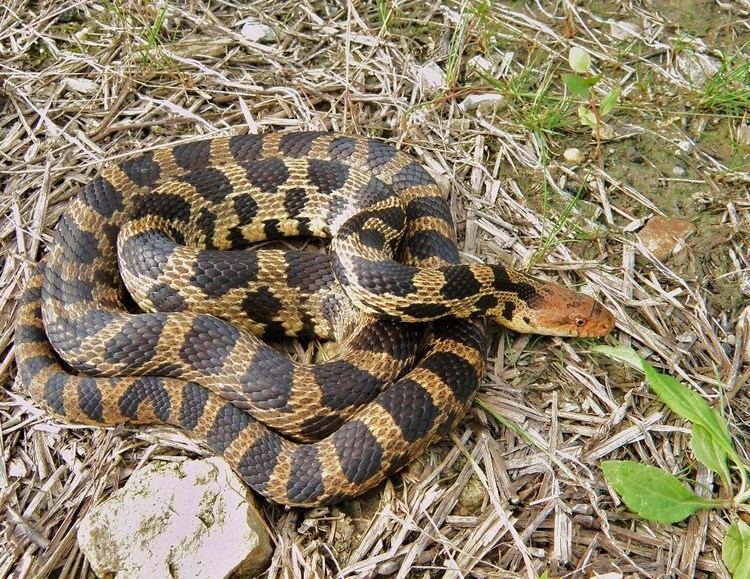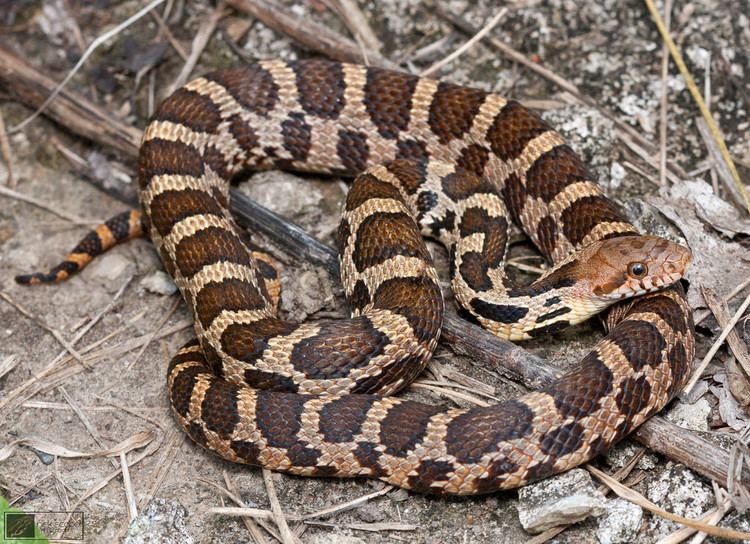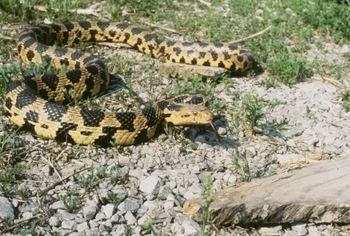Subphylum Vertebrata Suborder Serpentes Scientific name Pantherophis gloydi Rank Species | Phylum Chordata Higher classification Pantherophis | |
 | ||
Similar Snake, Pantherophis vulpinus, Reptile, Pantherophis, Gray ratsnake | ||
Pantherophis gloydi, commonly known as the eastern foxsnake or eastern fox snake, is a species of foxsnake. It is nonvenomous and can be found in the eastern Great Lakes region of the United States, as well as western Ontario in Canada.
Contents

Etymology
The specific name, gloydi, is in honor of American herpetologist Howard K. Gloyd.
Speciation

The eastern foxsnake is a North American ratsnake. It was recently split from its phylogenetically similar cousin the western foxsnake (Pantherophis vulpinus), of which it had been considered a subspecies, and now has full species recognition.
Geographic range and Habitat

The eastern foxsnake prefers to live in marshes and other wetlands, as well as in the adjacent fields and meadows. They are found in the eastern Great Lakes region. Both species of foxsnake live in the state of Michigan. The western foxsnake lives in the Upper Peninsula, where it is known as the pine snake. The eastern foxsnake lives in the Lower Peninsula of Michigan. They can also be found in Ohio in the United States, and in Western Ontario in Canada. Historically, eastern foxsnake populations occurred in New York, but is now extirpated.
Status

The eastern foxsnake is considered threatened over most of its range due to habitat loss. Numbers have plummeted because of the development of wetlands and coastal habitat. Their numbers have also fallen due to collection for the pet trade. The eastern foxsnake is often misidentified as the copperhead, Agkistrodon contortrix, due to their similar appearances, or as the eastern massasauga, Sistrurus catenatus, because they often rattle their tails similar to rattlesnakes as a form of mimicry. This also contributes to its decline in numbers, as many people fear that the snake may be venomous. In Ohio the eastern foxsnake is listed as a "Species of Concern" by the Ohio Division of Wildlife. In Michigan it is listed as a "Threatened Species" by the DNR and is protected by state law. In Ontario the species is listed as "Threatened Provincially and Nationally".
Behavior
Powerful constrictors, eastern foxsnakes will consume a variety of small mammals and birds. It has been hypothesized that they will also consume amphibians, but this has not been well documented. Eastern foxsnakes will occasionally wiggle their tails, rustling leaves, to ward off potential predators. This is a form of mimicry. The sound resembles that of a rattlesnake. When threatened, they may also coil, and if continued to feel threatened, strike.
Reproduction
Like all reptiles, the eastern foxsnake reproduces sexually and are r-strategists according to r/K selection theory. They lay between 7 and 29 eggs, which generally hatch after about sixty days. Eggs are usually laid under logs or in rotting wood or humus.
Conservation
Education may be the best form of conservation for this species. Being able to differentiate between this species and venomous ones, such as the copperhead or the eastern massasauga, may greatly reduce misidentification cases and subsequent deaths of the snake.
